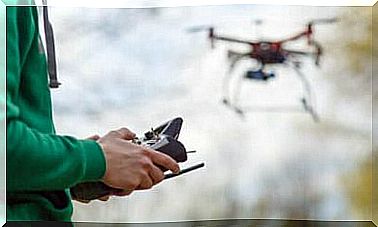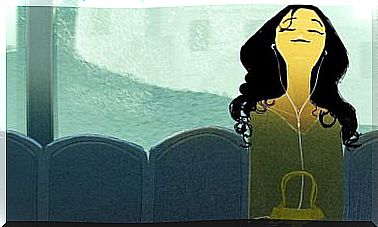Interoceptive Exposure In Panic Disorder

Panic or panic attacks are among this list of common reasons people come for consultation. Normally, these patients are cared for by primary care physicians. And if there is nothing organic or physical on the exam, they are referred to the specialist in clinical psychology. These cases could benefit from interoceptive exposure.
At other times, mostly due to a lack of professionals, they are treated with antidepressants or anxiolytics, without significantly improving the problem.
Specifically, the DSM-5 tells us about an episode of intense fear or discomfort that is accompanied by a feeling of danger or imminent death with a desire to escape. It starts abruptly and reaches its peak within the first 10 minutes. It must be accompanied by at least 4 or more of the 13 symptoms noted.
These symptoms may be:
- Palpitations or heart tremors: the most common symptom
- Sweat
- Tremors
- Feeling of suffocation
- Chest tightness
- Nausea
- Instability or dizziness
- Derealization or depersonalization
- Fear of losing control or going crazy
- Fear of dying
- Paresthesias
- Thrill sensations
- Hot flashes
These symptoms, which are nothing more than manifestations of the anxiety itself, are experienced with very intense discomfort. Because they are often attributed to physical symptoms or imminent death. Imagine that all of a sudden you have the feeling that your heart is “coming out of your mouth”. You pass out, sweat uncontrollably, or feel like you are suffocating.
If your thoughts are along these lines, what will inevitably happen is that those feelings of fear will grow stronger. This is called phobia or fear of fear. For this reason, treatment should be aimed at interpreting and tolerating these physical sensations, so that they do not intensify. We explore this topic further below.

How does interoceptive exposure work?
In any anxiety disorder, the technique of choice is almost always exposure. But we would be on the side of reductionism if we didn’t say anything else. Although exposure is an easy technique to describe theoretically, it may not be easy to apply. In addition, it presents a multitude of modalities depending on the problem encountered.
Same technique, same objective, but different procedures. Therefore, it is extremely important that the treatment is carried out by a specialized psychologist. If not done this way, not only can the problem not go away, it can even get worse and increase sensitivity.
The aim of the exhibition is to get used to the phobic stimulus. This stimulus can be anything specific, as happens in specific phobias. Habituation is a physiological process that occurs when the person feels on their own how the phobic stimulus is not having the consequences that they initially thought they were feeling.
In the case of interoceptive exposure, the fact that the patient is exposed to these physical sensations without adopting safety behavior covering the discomfort (taking anxiolytics, being with a family member, drinking water, etc. wearing sunglasses…) works in the sense that the person internalizes that these sensations are just that, sensations.
Therefore, the clinician, in consultation and also outside, should encourage the patient to intentionally induce feelings of panic. In addition, it is of the utmost importance not to engage in behavior that interferes with exposure or facilitates avoidance.

Exercises
Typically, the procedure involves generating symptoms for about a minute. By means of exercises that attempt to mimic the most common and feared symptoms of an anxiety attack characteristic of the patient. The most common strategies to achieve this are:
- Intentionally hyperventilate: this causes dizziness, derealization, blurred vision and lightheadedness
- Spin on a swivel chair: the objective is to cause dizziness and loss of orientation
- Breathing through a cannula: this causes dyspnea and a feeling of suffocation due to the restriction of air
- Holding your breath: this causes a feeling of suffocation
- Running at the site of the exhibition: this causes an increase in heart rate, breathing and sweating
- Tension of muscle areas: it causes a feeling of tension and hypervigilence
- Shaking your head from side to side: this causes dizziness and tension in the neck
Induction of these symptoms should be done 3 to 5 times a day. The frequency varies from case to case. On the other hand, it is more important to do the exposure right than to do it wrong repeatedly, until, through habituation, the patient begins to see how the level of anxiety is reduced to levels in which he is able to control it.
In the more advanced stages of treatment, the patient stops practicing these exercises and performs more “natural” exercises in his daily environment. For example, doing physical exercise, walking fast, climbing stairs, entering saunas… In this case, the exercises should not last more than 3 minutes.
Although interoceptive exposure is a very effective treatment for panic attacks, we need to prioritize the case we have and check whether there is a need to add another technique or perform other alternative treatments.
Some patients reject this type of exposure because they feel unable to sustain it until the point where habituation begins. Which, of course, must take priority in the intervention with a panicked patient. It is the therapeutic relationship based on empathy and understanding.
Second, psychoeducation is essential. When the patient understands what is happening to them and recognizes the vicious cycle of their anxiety, they are much more inclined to accept exposure.










